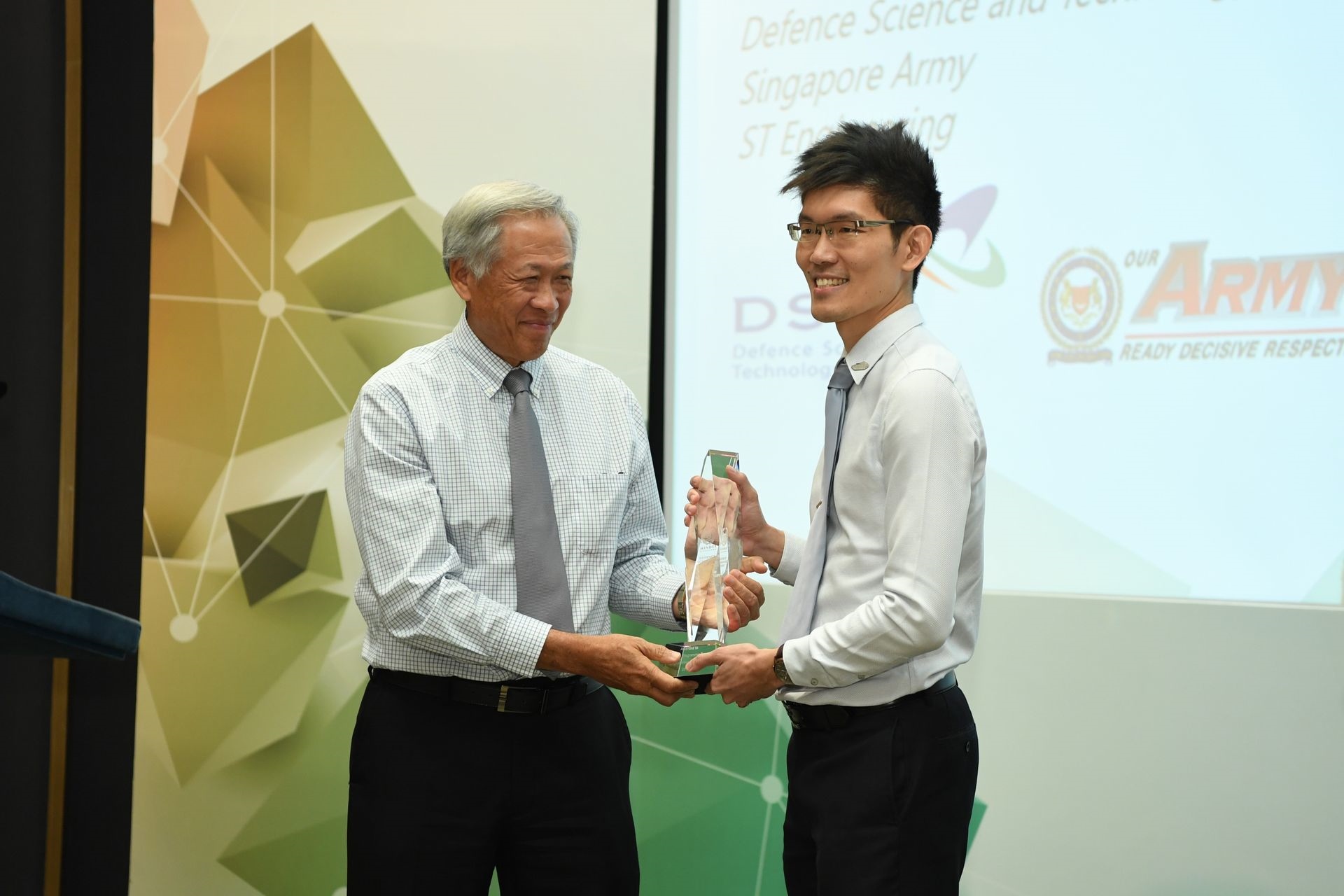HUNTING FOR THE BEST
Earlier this year, the Singapore Army unveiled their newest Armoured Fighting Vehicle (AFV) – the Hunter.// Story by Chia Chong Jin
// Photos by Kenneth Lin
Boasting greater firepower, mobility, and better protection for its soldiers, the Hunter AFV is the Army's first fully digitalised platform with C4 (command, control, communication and computer) systems, allowing it to fight alongside other platforms in the Singapore Armed Forces (SAF).
"In delivering the Singapore Army's first fully digitalised platform, the Hunter AFV team introduced new design and engineering approaches," said Mr William Peh from Defence Science and Technology Agency (DSTA).
The team used model-based systems engineering to design the first-of-its-kind Integrated Combat Cockpit, which enables the Hunter AFV's crew to collaborate effectively with one another and rapidly engage targets.
"We (also) established an open and modular vehicle electronic architecture to facilitate future technology insertions, and set up a Systems Integration Lab for efficient and cost-effective testing," added the 34-year-old Programme Director (Land Systems).
Besides building in engineering flexibility for the future integration of new capabilities, and the need to keep operating costs manageable, the Hunter AFV team also had to consider other factors such as the ability to operate with decreased manpower and time.
With the Hunter AFV being fully digitalised, on-board systems can report health, utilisation, faults and events data, allowing operators to be alerted to any fault and be guided by step-by-step instructions to rectify them.
"The Health and Utilisation Monitoring System is an important piece of the Hunter AFV’s maintenance capabilities. With this system, the soldiers can now rely on this to identify and troubleshoot faults within seconds, which would otherwise have taken hours in the past," said Mr Peh.
"With more than 1,000 parameters being logged by the system, we can now apply analytics on the data collected for fault trend analysis, or to make recommendations for condition-based maintenance to drive down operating costs."
In addition, augmented reality was adopted for maintenance training to enable self-directed learning with fewer instructors, while virtual reality was used to reduce training duration for recovery operations.
Mr Peh added: "Despite having more capabilities, we reduced the Hunter AFV’s maintenance cost by approximately 40 per cent compared to other armoured vehicles."
In recognition of their outstanding contributions towards our nation's defence, the Hunter AFV team – comprising of members from DSTA, Singapore Army and ST Engineering – received the Defence Technology Prize (DTP) 2019 Team (Engineering) Award.
They were among the three individuals and three team winners who were awarded at the DTP 2019 Awards Ceremony held on 25 Oct at the DSTA Auditorium.
Speaking at the ceremony, Minister for Defence Dr Ng Eng Hen credited the scientists and engineers whose commitment, dedication and hard work have provided Singapore with a robust national defence.
"If you look at (their) individual stories, they reflect different paths taken… But for either of them, a common passion and motivation that Singapore as a small country must make up for our lack of size and manpower through technological solutions, and gain an advantage through bold innovation and daring imagination," said Dr Ng.
Asked how he felt after the team were presented the DTP 2019 Award, Mr Peh said: "It is exciting and fulfilling to see our design come to fruition, and especially when we have delivered the Hunter AFV that represents a leap in capabilities, and at the same time, addresses resources constraints.
"The Hunter AFV epitomises the innovations and contributions by the Army, DSTA and ST Engineering…and it gives us confidence for the future, as we continue to push boundaries to deliver capabilities that will safeguard Singapore for years to come."










